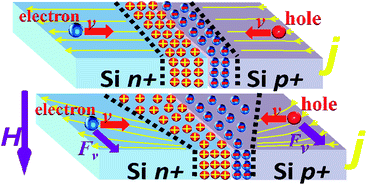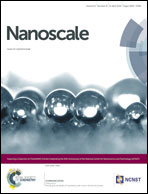Angular dependence of the magnetoresistance effect in a silicon based p–n junction device†
Abstract
We report a pronounced angular dependence of the magnetoresistance (MR) effect in a silicon based p–n junction device at room temperature by manipulating the space charge region of the p–n junction under a magnetic field. For the p–n junction device with various space charge region configurations, we find that all the angular dependence of the MR effect is proportional to sin2(θ), where the θ is the angle between the magnetic field and the driving current. With increasing the magnetic field and driving current, the anisotropic MR effect is obviously improved. At room temperature, under a magnetic field 2 T and driving current 20 mA, the MR ratio is about 50%, almost one order of amplitude larger than that in the magnetic material permalloy. Our results reveal an interpretation of the MR effect in the non-magnetic p–n junction in terms of the Lorentz force and give a new way for the development of future magnetic sensors with non-magnetic p–n junctions.

- This article is part of the themed collection: ChinaNANO

 Please wait while we load your content...
Please wait while we load your content...